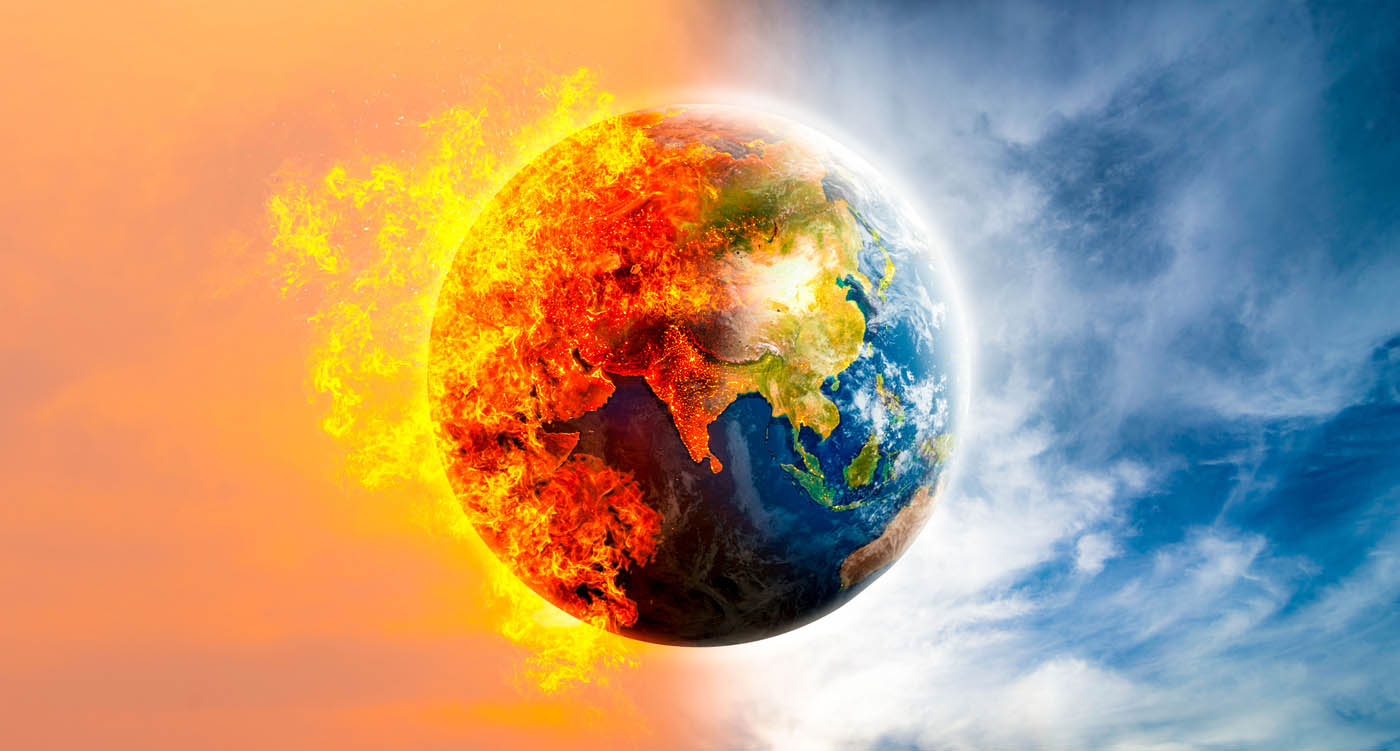
Global warming is most commonly measured using the average surface temperature of the planet. But there is variability in the weather, some of which is natural. For example, El Niño events and the impacts from volcanic activity, can affect the measured temperatures in any particular year.
Data from Copernicus, the EU’s provider of climate data, (in Figure 1) shows recent temperatures are already breaching 1.5°C. For example, in September 2023, warming of 1.76°C was recorded relative to pre-industrial levels. However, to breach the 1.5°C threshold, the temperature needs to be higher than this for more than one point in time.
Jo Paisley
One common way to calculate the longer-run temperature is to look for the underlying trend. In the Intergovernmental Panel on Climate Change (IPCC) 1.5°C Report, global warming for a particular year is given as the mid-point in a 30-year average. For example, the average temperature between 1990 and 2020 will be ascribed to 2005. The IPCC’s Sixth Assessment Report (AR6) used a similar approach, but with a 20-year period.
Copernicus created an interesting tool that can be used to explore how the timing of a potential breach varies depending on how actual historical temperatures evolve. Figure 1 shows an output of the tool. Given the conditions in April 2024 and projecting the linear trend from the previous 30 years, the tool indicates that global warming will breach 1.5°C by May 2033. However, due to the way the long-run temperature is calculated, if the temperature increase was 1.5°C in 2033, this wouldn’t be declared until some years later — on the current trend it wouldn’t be declared until 2048.

Source: Copernicus Climate Change Service
The lag between a breach and its recognition could delay reactions at a time when global emissions – and therefore temperatures - continue to rise, and put the Paris Agreement 1.5°C target at risk. Interestingly, the Paris Agreement statement contains no formally agreed way of defining the level of global warming or temperature increase.
As this is a critical target, in a recent article in the Nature Journal, scientists ask what would count as passing 1.5°C. They argue that researchers and the policy community need to agree on a metric for determining the current level of global warming for policy purposes. And once it is agreed, the metric should be formally adopted for the Paris Agreement.
Maxine Nelson
This makes sense, since different metrics will produce different estimates of global warming. And the differences between the methods vary over time. For example, assuming the world stays on its current warming trajectory, AR6 IPCC projections suggest that 1.5°C will be breached around 2030. But, because of the lagging nature of the 20-year average, this breach will not be formally recognized until around 2040.
One way to overcome the degree of lagging would be to simply shorten the number of years used in the average. However, the scientists state this would mean that natural variability could come to dominate the calculation, which might be very unhelpful from a policy perspective. Another idea is to calculate a global warming index, using estimates based on changes in the concentrations of greenhouse gases and aerosols. The UK’s Met Office has a variety of climate measures, which clearly shows the range of outcomes that can be produced from different measurement approaches.
Even though other measures can be constructed, the scientists argue that any formal metric of global warming needs to be consistent with the current IPCC practice of using 20-year averages attached to a midpoint as well as providing an indicator of current warming. They therefore suggest changing the metric so the 20-year average temperature rise is centred around the current year. This so-called ‘Current Global Warming Level’ (CGWL) would then be calculated by using actual observations for the past 10 years with climate model projections or forecasts for the next 10 years, and taking an average over the combined 20-year period (Figure 2). They tested this approach using different models and emissions scenarios, and found that the current global warming centred on end 2022 is around 1.26 °C.

Source: Approaching 1.5 °C: how will we know we’ve reached this crucial warming mark?
Parting Thoughts
It may seem odd that we spend so much time observing the impacts of increased global warming, and yet there is no universally agreed metric for determining when we cross the 1.5°C threshold. It makes sense that a single year in which 1.5°C is exceeded should not count as breaching the Paris Agreement target, but it’s equally sensible not to have to wait until many years afterwards to have it confirmed.
As risk professionals know all too well, it’s important to agree the specific details about how metrics should be calculated. It’s just surprising that such an important metric is still being debated, so it’s an area to watch as there could be policy implications if a universal metric is agreed to.
Jo Paisley, President, GARP Risk Institute, has worked on a variety of risk areas at GARP Risk Institute, including stress testing, operational resilience, model risk management, and climate and environmental risk. Her career prior to joining GARP spanned public and private sectors, including working as the Director of the Supervisory Risk Specialist Division within the Prudential Regulation Authority and as Global Head of Stress Testing at HSBC.
Maxine Nelson, Ph.D, Senior Vice President, GARP Risk Institute, currently focusses on sustainability, climate and nature risk management. She has extensive experience in risk, capital and regulation gained from a wide variety of roles across firms including Head of Wholesale Credit Analytics at HSBC. She also worked at the U.K. Financial Services Authority, where she was responsible for counterparty credit risk during the last financial crisis.
Topics: Physical Risk, Transition Risk